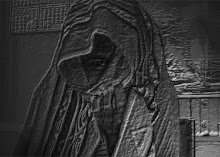Maraland is of one the three autonomous district councils within Mizoram covering 1442sq.kms of the southern tip of Mizoram State of the Union India. The inhabitants are mainly isolated from the rest of their countrymen geographically and in many ways due to mal-communications and transportations. Their immediate neighbours are the Lais(Pawis as known to some) - who are the inhabitants of another autonomous district council(L.A.D.C) within Mizoram State, are in the north and in the West; Myanmarese in the East and in the South. Thus, she shares an international boundary with Myanmar(formerly Burma) for about 450kms in the east and in the south.
Maraland is inhabited by five different dialect speaking people, who called themselves the Maras. The fives are Tlosai, Hawthai, Zyhno, Chapi and Vytu. But outsider, mainly the Mizo-Lusheis called them as 'The Lakher'; by this very name an Englishman by name N.E Perry, an I.C.S in British-India had penned a book about the Maras. It is the sole book published so far relating to the Mara people. But much of his writing was influenced by the interpreter who were the Mizo-Lusheis, and may not valid in all aspects.
The Maraland-within-India would be a better word to describe as a larger section of the Maras are also living in the neighbouring country, i.e. Myanmar(formerly Burma). In fact, when we referred to the word 'Maraland' it covers the Maraland in India and in Myanmar. The Maraland within Myanmar is a more fertile land and more populous as well, but the junta government in Yangon never gives any interest and it remains unexplored, un-touched land till today...(for more info. please refer Indo-Myanmar Maraland Maps).
By religion the Maras are cent percent Christians. For more detail please go to 'Churches' section.
Out of over 100,000 Mara people, around 46,000 Maras are living in the Mara Autonomous District Council in India. The rest comes under the government of Myanmar.
Though the partition was a bitter experience for the Maras, who have chosen to part with India or Myanmar purely on the communications and transportation factors as there is the biggest river- R. Kolodyne flowing in the middle of the land. The people in the East of the river choose to part with Myanmar as it will be more accessible for them to get their daily necessities from Haka township and Sittwe township, so also the Maras who lives in the west of the river also choose to part with India as getting salt :) will be easier from Tlabung town.
It may sound silly to have chosen two separate countries on the basis of mal-communications and transportations. But the reality is that during rainy reason starting from May to mid-September, people from the other side could hardly manage to cross the river as there was and is no proper bridge and boat to ferry people across the river till today.
Nevertheless, the Maras have happily adjusted themselves with their adopted countries. They have never rebelled against the power and the authority of the central governments in their adopted countries.
Maraland is inhabited by five different dialect speaking people, who called themselves the Maras. The fives are Tlosai, Hawthai, Zyhno, Chapi and Vytu. But outsider, mainly the Mizo-Lusheis called them as 'The Lakher'; by this very name an Englishman by name N.E Perry, an I.C.S in British-India had penned a book about the Maras. It is the sole book published so far relating to the Mara people. But much of his writing was influenced by the interpreter who were the Mizo-Lusheis, and may not valid in all aspects.
The Maraland-within-India would be a better word to describe as a larger section of the Maras are also living in the neighbouring country, i.e. Myanmar(formerly Burma). In fact, when we referred to the word 'Maraland' it covers the Maraland in India and in Myanmar. The Maraland within Myanmar is a more fertile land and more populous as well, but the junta government in Yangon never gives any interest and it remains unexplored, un-touched land till today...(for more info. please refer Indo-Myanmar Maraland Maps).
By religion the Maras are cent percent Christians. For more detail please go to 'Churches' section.
Out of over 100,000 Mara people, around 46,000 Maras are living in the Mara Autonomous District Council in India. The rest comes under the government of Myanmar.
Though the partition was a bitter experience for the Maras, who have chosen to part with India or Myanmar purely on the communications and transportation factors as there is the biggest river- R. Kolodyne flowing in the middle of the land. The people in the East of the river choose to part with Myanmar as it will be more accessible for them to get their daily necessities from Haka township and Sittwe township, so also the Maras who lives in the west of the river also choose to part with India as getting salt :) will be easier from Tlabung town.
It may sound silly to have chosen two separate countries on the basis of mal-communications and transportations. But the reality is that during rainy reason starting from May to mid-September, people from the other side could hardly manage to cross the river as there was and is no proper bridge and boat to ferry people across the river till today.
Nevertheless, the Maras have happily adjusted themselves with their adopted countries. They have never rebelled against the power and the authority of the central governments in their adopted countries.

No comments:
Post a Comment